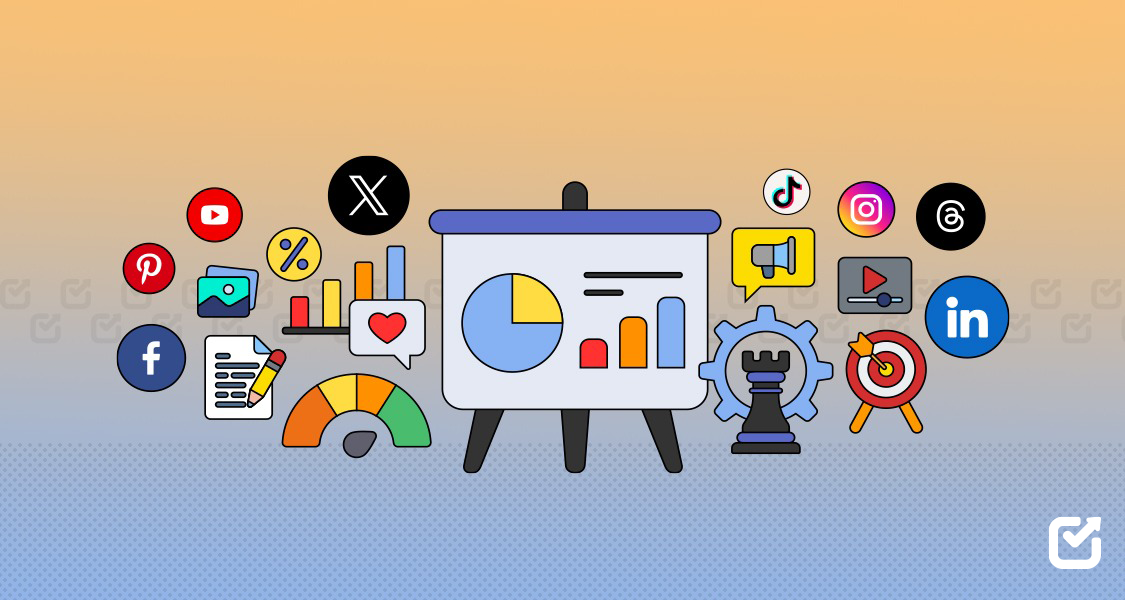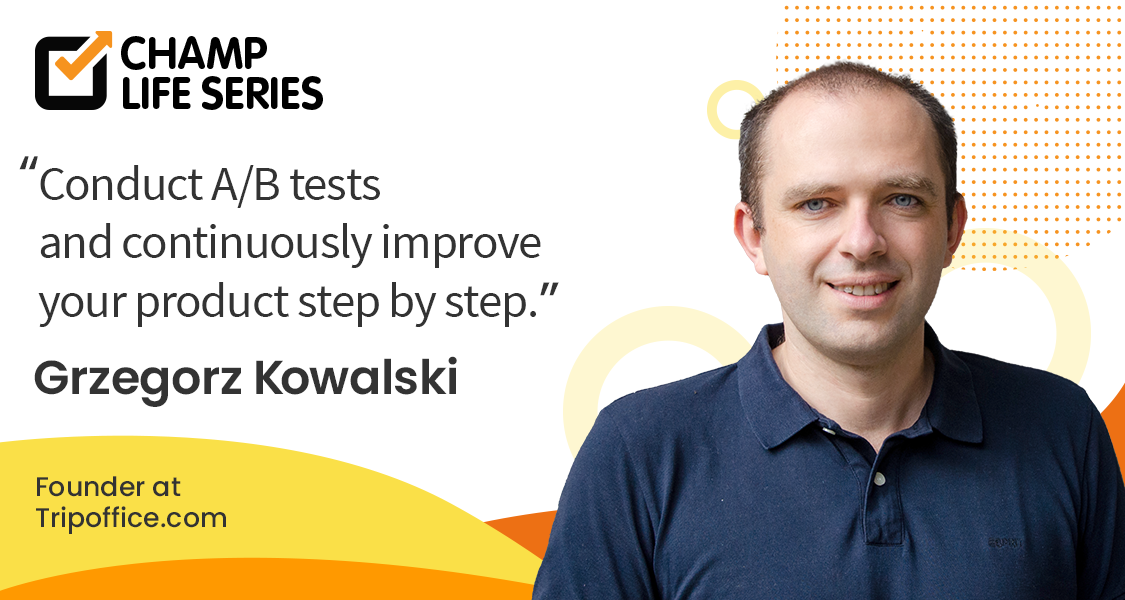Nonprofits don’t compete for donations; they compete for attention.
With increasing donor expectations and online engagement, digital marketing for nonprofits isn’t a luxury anymore.
In fact, with 54% of donors wanting to donate online and 87% of nonprofits reporting that digital marketing attracts new supporters, your marketing efforts need to be top-notch.
So, how does your nonprofit stand out in a crowded online space?
Many nonprofits struggle with limited budgets, tired tactics, and the need to demonstrate a return on investment.
But the correct digital marketing strategy can flip this script.
So what’s the trick? It begins with social media—individuals who engage with nonprofits on social media take action, be it by donating or volunteering.
If multiple platforms make your head spin, a social media management tool can streamline the effort.
Let’s take a closer look at how digital marketing can help your nonprofit thrive in 2025.
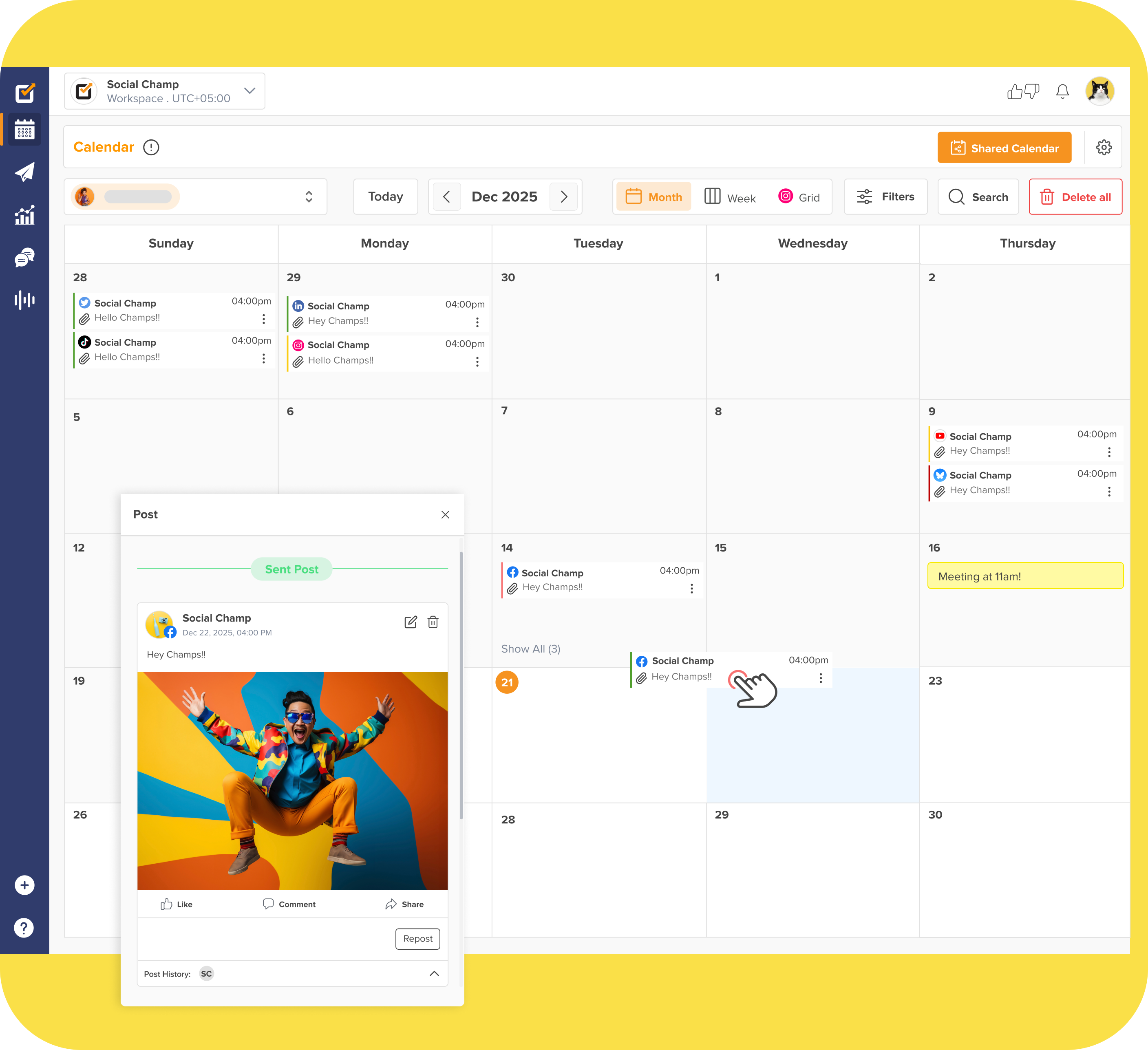
Be the Nonprofit Everyone Follows—Start With Social Champ!
With Social Champ, you can schedule posts, track engagement, and run campaigns that engage your supporters. Take control now!
Short Summary
- Digital marketing for nonprofits involves using online platforms to engage supporters, raise awareness, and drive donations.
- Nonprofits need a strong digital presence to effectively connect with active online donors.
- Key digital marketing strategies for nonprofits include social media, email marketing, SEO, and paid advertising.
- Social media helps build community and share the nonprofit’s story, increasing visibility and engagement.
- Email marketing remains a powerful tool for direct communication, providing updates and calls to action.
- SEO ensures your nonprofit’s website is discoverable by those searching for causes like yours.
- Consistency in content creation, audience interaction, and strategy is crucial for sustaining momentum.
- Social Champ helps nonprofits streamline their social media management and track platform performance.
What Is Digital Marketing for Nonprofits & Why It Matters?
Digital marketing for nonprofits involves using online platforms and tools to engage donors, raise awareness, and attract donations.
Unlike traditional marketing, digital marketing for nonprofits uses channels like social media, emails, and search engines to communicate with more people and achieve measurable results.
For any nonprofit trying to widen its base and its impact, digital marketing is a must-have strategy in this era.
But why should nonprofit marketing be a priority for your organization?
The reason is straightforward: your donors are online. Whether they’re on social media, surfing the web, or reading emails, they’re spending their time there.
Your nonprofit must have a robust digital presence to connect with them effectively.
Featured Article: 10 Best Influencer Analytics Tools to Boost Campaign ROI
Why Digital Marketing Is Important for Nonprofits
In 2025, digital marketing for nonprofits isn’t trendy—it’s the key to a winning strategy.
The digital world provides your nonprofit with the means to:
-
Engage With a Wider Audience
Digital channels enable you to reach individuals outside your local area, leveraging an international network of supporters.
-
Create Lasting Relationships
Digital marketing is not just about awareness—it’s about building engagement.
Whether it’s engaging with social media comments or sending targeted emails, digital tools enable you to build genuine connections with your audience.
-
Boost Donations and Support
Digital marketing takes action.
Whether it’s asking for donations, signing a petition, or volunteering, successful digital strategies help convert passive supporters into active donors.
Key Components of Digital Marketing for Nonprofits
Successful nonprofit marketing involves a multi-channel strategy.
The following are some of the essential strategies that can see your nonprofit successful in the digital era:
-
Social Media Marketing
Social media is an excellent means of connecting with your community.
Consistently sharing content that speaks to your nonprofit’s cause, success stories, and future events keeps supporters in touch and aware.
It is an area where your organization can communicate directly with donors, volunteers, and possible advocates.
-
Email Marketing
Email is still a great tool for nonprofits.
Email lets you speak directly to your audience, whether through a monthly newsletter or a specific campaign.
Through email, you can update your audience on your organization’s successes, events, and offer ways they can get involved.
-
Search Engine Optimization (SEO)
Search engine optimization (SEO) ensures that individuals who are searching for causes such as yours can easily find your nonprofit.
SEO causes your website to show up higher on search pages, making it more noticeable to prospective donors.
-
Paid Advertising
Advertising is a great choice if you need to expand your reach fast.
Both Google Ads and social media ads can place your nonprofit’s message in front of a target audience, driving traffic to your site or fundraising page.
The Importance of Consistency and Strategy
Consistency is one of the most important aspects of effective digital marketing for nonprofits.
Regular posting, audience engagement, and a clear, targeted strategy are essential to sustaining momentum.
By developing a well-structured digital marketing strategy, your nonprofit can establish long-term relationships with donors, increase awareness, and ultimately expand its reach.
So, why is digital marketing important?
Well, it’s the perfect way to help your nonprofit achieve its full potential in the digital era.
Featured Article: Reel vs Story: Understanding the Key Differences and When to Use Them
How to Build an Effective Digital Marketing Strategy for Your Nonprofit
Building an effective digital marketing for nonprofits strategy is essential to growing your nonprofit’s reach and impact.
A well-crafted strategy will help your nonprofit engage supporters, grow your online presence, and drive donations.
Below, we’ll outline the key steps to building an effective strategy that works for your organization and highlight how tools like Social Champ can streamline your efforts.
-
Set Clear Goals for Your Nonprofit Marketing
To begin with any nonprofit marketing strategy, clear, action-focused goals must be defined.
Without specific goals, it’s easy to get lost in digital marketing and miss out on your desired results.
What to Do:
- Identify Your Primary Goals: Would you like to boost donations, raise awareness of a specific cause, or expand your mailing list?
- Break Down Goals Into Measurable Actions: For instance, “Increase our email list by 20% within six months” or “Boost social media engagement by 15%.”
Setting these goals allows you to focus on the activities that will deliver the greatest return.
-
Know Your Audience and Their Needs
Understanding your audience is at the core of any effective digital marketing for nonprofits strategy.
To craft content that inspires engagement, you must understand who you are communicating with and what drives them to act.
What to Do:
- Create Detailed Buyer Personas: Know the age, interests, and online activities of your donors. What social media do they use? What types of content do they interact with?
- Monitor Engagement: Tools like Social Champ can help you track the performance of your social media content across different platforms, giving you insights into what types of posts are most effective.
The more familiar you are with your audience, the better you can develop campaigns that engage and convert.
-
Choose the Right Digital Channels
With all these online channels, focusing your efforts on those that will return the most benefits is essential.
Not every digital marketing channel is equal, so knowing where your customers spend their time is vital.
What to Do:
- Focus on Social Media: Facebook, Instagram, and LinkedIn are excellent for community building, storytelling, and fundraising. Social Champ allows you to manage all your social media accounts from a single dashboard, saving time and maintaining consistency across all platforms.
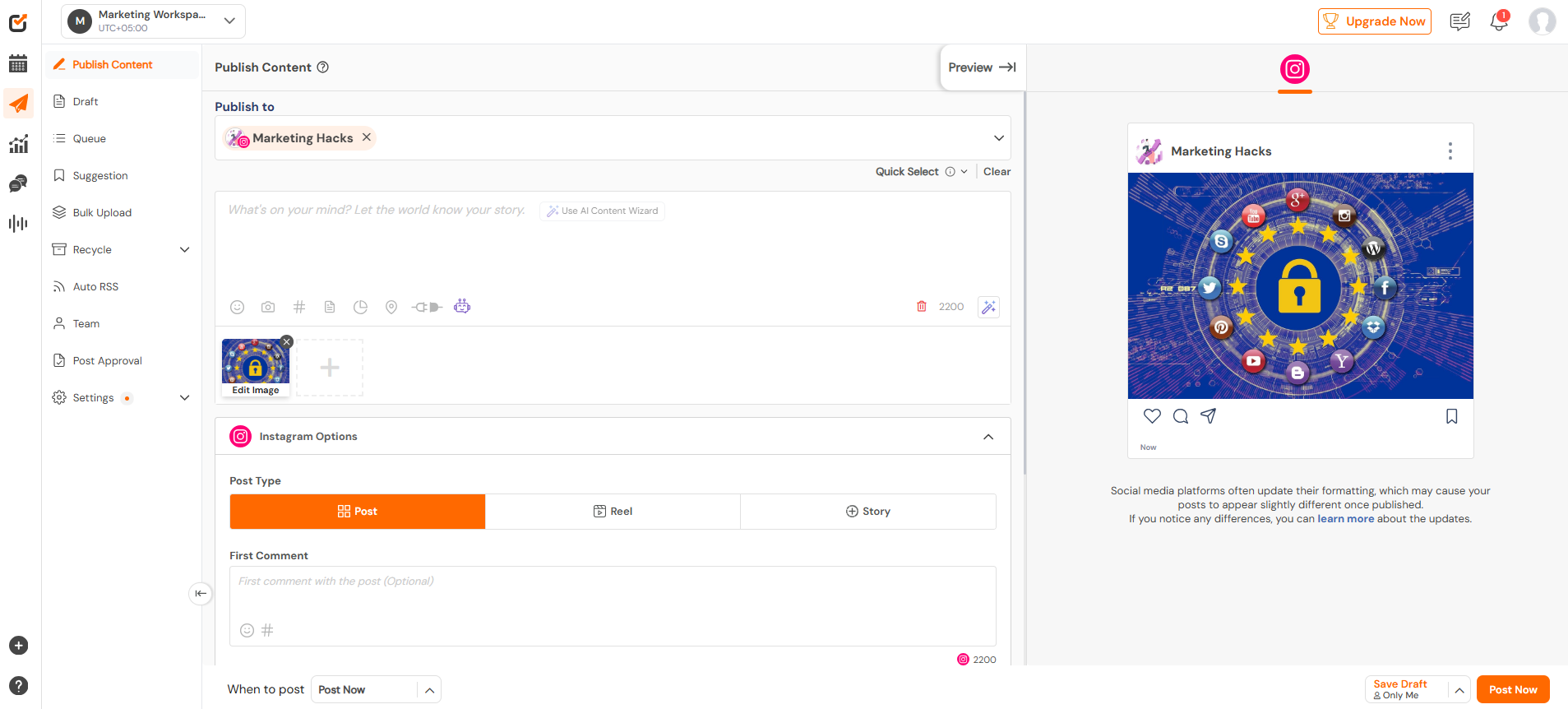
Social Champ’s Dashboard - Utilize Email Marketing: Email is still one of the most powerful means of reaching supporters. Utilize it to send out newsletters, inform donors, and advertise events.
- Invest in SEO: Optimize your site so individuals can easily find you when they are searching for causes like yours.
Targeting where your audience spends most of its time will allow you to work maximally.
- Focus on Social Media: Facebook, Instagram, and LinkedIn are excellent for community building, storytelling, and fundraising. Social Champ allows you to manage all your social media accounts from a single dashboard, saving time and maintaining consistency across all platforms.
-
Create Engaging, Impactful Content
Content is what makes digital marketing successful.
To get your audience engaged, you must provide content that communicates with their needs, values, and interests.
From social media updates and email newsletters to blog posts, your content must share your nonprofit’s purpose and cause people to take action.
What to Do:
- Share Stories: Post success stories illustrating the work your nonprofit is doing. Telling genuine stories creates an emotional connection with your audience.

An Instagram Post by a Nonprofit Organization Highlighting a Nonprofit Success Story - Include Clear Calls to Action (CTAs): Each piece of content must call your audience to action, whether donating, volunteering, or amplifying your message.
- Utilize Visuals: Good-quality images and videos help to make your content shareable and engaging.
Social Champ lets you plan, schedule, and manage content across all platforms, creating an automatic flow of posts that keep your audience interested.
- Share Stories: Post success stories illustrating the work your nonprofit is doing. Telling genuine stories creates an emotional connection with your audience.
-
Automate and Optimize Your Marketing Efforts
Automation is a nonprofit’s best friend, particularly regarding time and resource management.
Tools like Social Champ will enable you to schedule posts in advance, maintain your social presence, and monitor engagement all in one place.
What to Do:
- Use Scheduling Tools: Schedule your social media posts in advance to maintain consistency and save time.
- A/B Test Your Content: Test various headlines, images, and CTAs to determine what works best with your audience. Use the insights to optimize future campaigns.
- Monitor Results: Periodically review your campaign performance to see what is working and what is not.
Automating routine tasks and optimizing allows your nonprofit to stay strong without the extra burden.
-
Engage With Your Community
Engagement is the name of the game when it comes to building lasting relationships with your fans.
Don’t just post content and walk away—interact with your followers, respond to comments, and engage in conversations.
What to Do:
- Respond to Comments and Messages: Value your fans’ feedback to demonstrate that they matter. Use Social Champ to monitor all interactions so that responses are prompt across all mediums.
- Host Live Sessions or Q&A: Connect with your community in real time by hosting live events, webinars, or Q&A. This is a perfect way to strengthen your relationship with your audience.
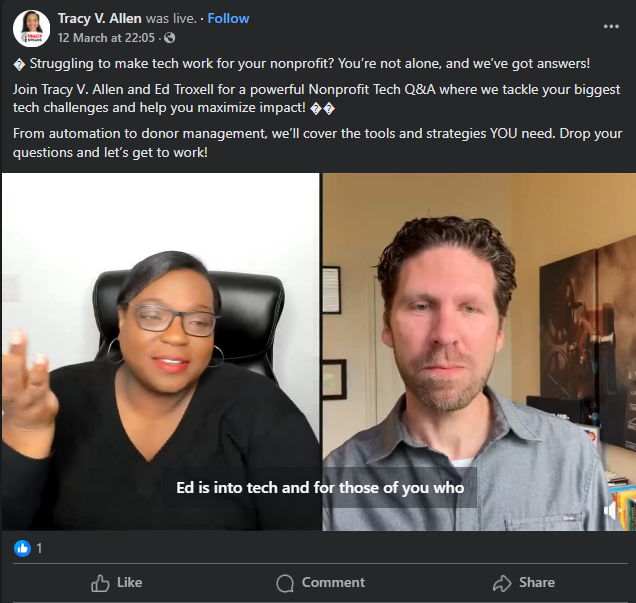
A Nonprofit Tech Q&A Session of Entrepreneurs on Facebook - Acknowledge Your Donors: Thank your supporters publicly on social media to show appreciation and encourage continued involvement.
Regular communication with your audience will help build trust, loyalty, and long-term engagement.
How to Track & Enhance Your Nonprofit’s Digital Marketing Performance
Tracking and measuring the success of your digital marketing for nonprofits efforts is critical to knowing what’s effective and where there’s potential for improvement.
Without analytics, it’s hard to optimize campaigns and know if you’re reaching your goals.
With Social Champ’s robust analytics features, you can monitor and improve your nonprofit’s marketing performance.
-
Define Key Metrics for Success
To effectively track your nonprofit marketing efforts, start by defining which metrics matter most to your organization.
Here are some key metrics to focus on:
- Engagement Rate: Track likes, shares, comments, and interactions on your social media posts to understand how your audience responds to your content.
- Conversion Rate: Monitor the number of individuals taking action—donating, subscribing to a newsletter, or volunteering.
- Traffic Sources: See where your website visitors originate from to know which channels generate the most traffic.
-
Use Social Champ’s Analytics to Track Performance
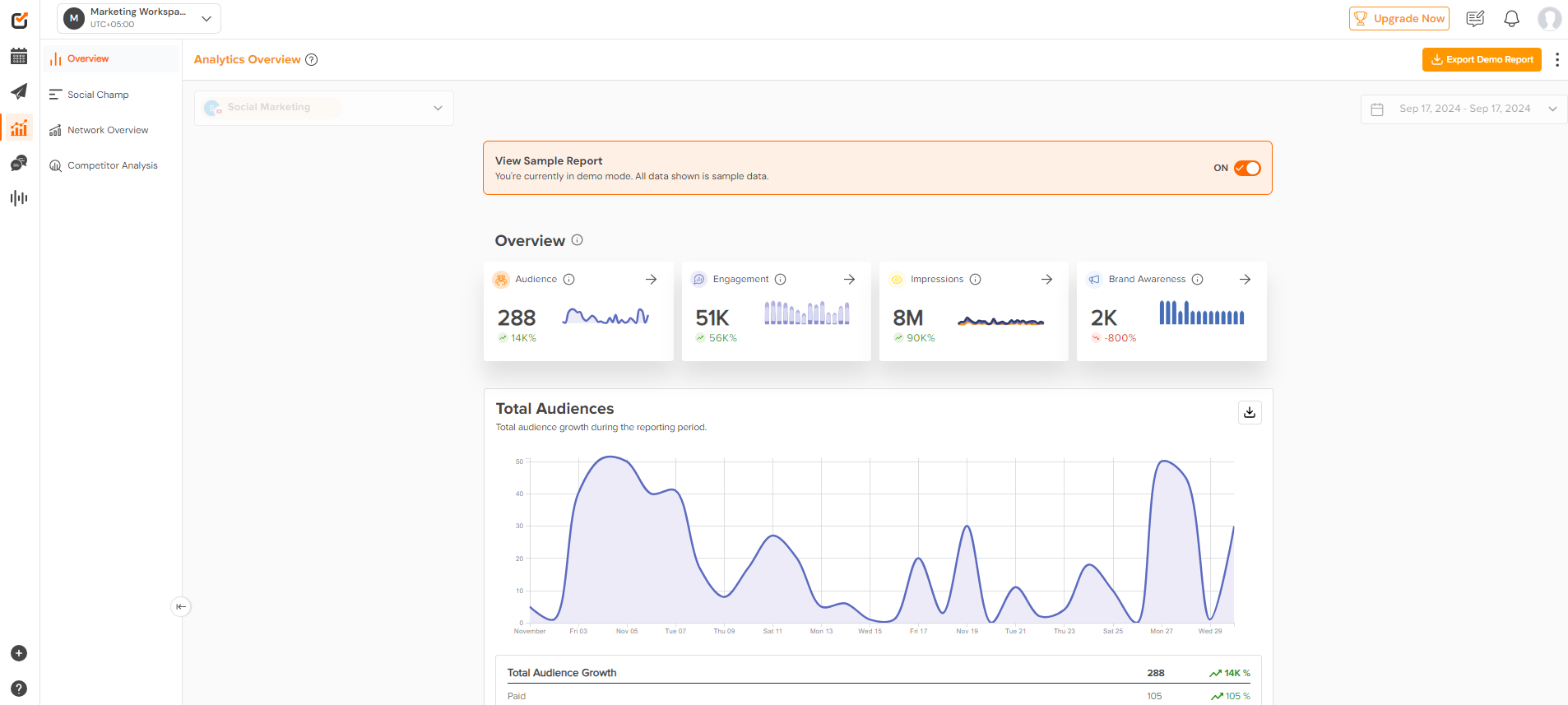
Social Champ’s Analytics With Social Champ, monitoring your nonprofit’s digital marketing performance becomes easier.
Social Champ provides strong analytics that gives insights into every element of your social media campaigns. You can:
- Monitor engagement across all social platforms in one place, making it easy to see which posts resonate most with your audience.
- Analyze audience behavior to refine your content and posting schedule according to when your supporters are most engaged.
- Track your growth over time, comparing metrics such as followers earned, engaged posts, and total reach.
-
Optimize Based on Data
Once you’ve gathered data, it’s time to make improvements.
Use the insights from Social Champ to:
- Adjust content strategies based on what gets the most engagement.
- Experiment with different posting times and formats to increase interaction.
- Refine your calls to action (CTAs) to ensure they’re compelling and effective.
By constantly monitoring, examining, and optimizing your strategies, you can improve your nonprofit’s digital marketing campaigns and achieve improved results.
With Social Champ, you have the tools to measure success and optimize campaigns efficiently.

Ready to Streamline Your Nonprofit’s Digital Marketing?
From scheduling posts to tracking engagement, Social Champ makes digital marketing for nonprofits effortless. Maximize your reach and impact with just a few clicks!
Conclusion
Digital marketing for nonprofits has emerged as an essential strategy for engaging a larger audience and driving meaningful interaction.
Whether it’s social media, email marketing, or search engine optimization, the digital world allows nonprofits to interact with prospective donors, build lasting relationships, and expand their impact.
Creating a well-defined and actionable strategy—beginning with clear goals, knowing your audience, and choosing the right digital channels—can dramatically improve your nonprofit’s online visibility.
Social Champ offers powerful tools to simplify your work, from scheduling posts to measuring performance with solid analytics.
With a well-executed nonprofit marketing strategy, your organization can not only increase awareness but also drive greater support for your mission.
Don’t miss out on the opportunity to take your nonprofit to new heights with digital marketing—start planning your strategy today!


